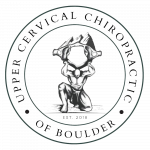What is a Herniated Disc?
Vertebral discs are the shock absorbers of the spine. They sit in between the spinal vertebrae and act to cushion the spine during movement. The discs are filled with a gel-like substance called the nucleus pulposus. The outer layer of the disc, called the annulus fibrosus, is a tough, fibrous material that helps to keep the disc in place.
A herniated disc occurs when the nucleus pulposus deteriorates and puts pressure on the annulus fibrosus, causing it to crack. This can lead to the disc bulging or rupturing, which can put pressure on the spinal cord or the nerves that branch off from it. A herniated disc can occur at any age but is most common in people between the ages of 30 and 50.
Signs and Symptoms of a Herniated Disc
Herniated discs can cause a variety of symptoms, depending on the location of the herniation and the severity of the injury. The most common symptom is pain around the herniated area. This can range from a dull ache to a sharp, shooting pain. The pain is usually worse with movement, coughing, or sneezing. Other symptoms can include numbness, tingling, muscle weakness, and postural issues.
How the Upper Cervical Spine Affects a Herniated Disc
The upper cervical spine is the topmost segment of the spinal column. Made up of seven vertebrae, the upper cervical spine is one of the most flexible regions of the spine. As a result, the vertebral discs in this area are subject to a great deal of wear and tear. The risk of herniated discs increases with age, as the discs degenerate and lose their ability to cushion the spine. A misalignment in the upper cervical spine can fast-track this degenerative process by causing the discs to rub against the vertebrae. This can lead to chronic pain, inflammation, and eventually, herniation.
How Our Herniated Disc Treatment Works
The foundation of our treatment approach is the correction of misalignments in the upper cervical spine. Using the Blair Upper Cervical technique, we are able to realign impacted vertebrae and take the pressure off of the vertebral discs. This allows the discs to heal and prevents further degeneration. The Blair Upper Cervical technique is a gentle, precise, and non-invasive treatment that has helped many people find relief from herniated disc pain.
At Upper Cervical Chiropractic of Boulder, our expert Blair chiropractors, Dr. Christina Coblish and Dr. Ryan Moeskau, use a variety of advanced diagnostic tools to determine if your herniated disc is the result of a misalignment in the upper cervical spine. This typically includes the use of cone-beam computed tomography, a dynamic 3D image that provides a detailed view of the upper cervical spine.
If a misalignment is detected, Dr. Coblish and Dr. Moeskau will use the Blair Upper Cervical technique to restore natural alignment to the upper cervical spine. This process is completely painless, Dr. Coblish and Dr. Moeskau will never use techniques that involve twisting or popping the spine.
If you’re looking for an effective and natural way to treat a herniated disc, we’re here to help! We service patients across Colorado, including Boulder, Longmont, Louisville, Erie, Lafayette, Broomfield, and Denver.


